Broadway
Cast & Crew
William A. Seiter
George Raft
Pat O'brien
Janet Blair
Broderick Crawford
Marjorie Rambeau
Film Details
Technical Specs

Synopsis
Motion picture actor George Raft flies from Hollywood to New York with his old friend and aide, Mack "Killer" Gray. George decides to take a walk on the streets of Broadway, where he discovers that "The Paradise," an old nightclub where he once worked, is about to be converted into a bowling alley. He then reminisces with the night watchman about the days of prohibition, when he was a dancer at the club: On the night of the Jack Dempsey-Gene Tunney fight in 1926, George's dance partner, Billie Moore, is nearly fired from the club for missing a rehearsal, but her current boyfriend, gangster Steve Crandall, fixes things for her with the nightclub's owner, Nick. George asks Steve to leave Billie alone, and the two men show mutual disdain for each other's career. Later that day, Steve murders rival bootlegger Jim "Scar" Edwards in the nightclub's office, only to have homicide detective Dan Alyosius McCorn arrive at the club that night and question him about Edwards' disappearance. Backstage, Dan recognizes chorus girl Pearl as the murdered gangster's fiancée, though she is unaware of Scar's death until she overhears Steve bragging about it to a group of out-of-town gangsters. That night, Steve has a party for gangster boss Rinalti, and Billie breaks her date with George to attend. The drunken Rinalti and Steve nearly come to blows over Billie, after which Steve tells Billie that "she is his girl." Although Billie then warns George to stay away from Steve, he confronts the gangster anyway. Steve is about to shoot George when his henchman, Porky, warns him that Dan is about to enter the room. Steve then hands the gun to George, and the two gangsters tell the detective that George was attempting to rob them. Despite the gangsters' interference, Dan gets George safely out of the nightclub, taking Steve's gun, the same one used to kill Scar, with him. After bringing George to the morgue to see Scar's body, the police question George about the gun and the murder. Later George is allowed to escape by Dan, and he returns to the nightclub to learn that Nick and aging singer Lillian "Lil" Rice have gotten married. Steve then agrees to perform that night if he and Billie are finally allowed to perform their "specialty" number, a tango, which becomes a big hit. Thinking that George has "squealed," Steve plans to ambush the dancer, but George is alerted by Nick. George then confronts Steve in his office, and after the gangster confesses all, the two men begin to fight. They are interrupted, however, by Pearl, who shoots and kills Steve. After rushing Pearl out of the room, George is confronted by Dan, and he tells the policeman that Steve was already dead when he entered the room. Knowing the truth, Dan tells the gangsters that Steve committed suicide and orders his gang to leave the nightclub for good. Back in the abandoned nightclub, George tells the watchman that Pearl confessed to the murder the next day, served her prison term, and is now living quietly in Albany. Dan became the police commissioner of New York and married cigarette girl Mary. George and Billie, however, never got married, as he "never got the chance." George then walks out the old nightclub and back onto the streets of Broadway.

Director

William A. Seiter
Cast

George Raft
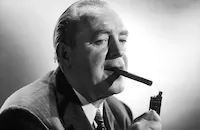
Pat O'brien

Janet Blair
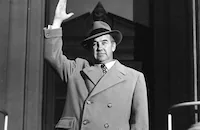
Broderick Crawford

Marjorie Rambeau

Anne Gwynne

S. Z. Sakall

Edward S. Brophy

Marie Wilson
Gus Schilling

Ralf Harolde

Arthur Shields

Iris Adrian
Elaine Morey
Dorothy Moore

Nestor Paiva
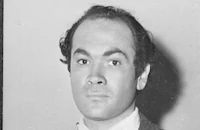
Abner Biberman
Damian O'flynn
Mack Gray
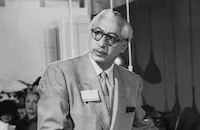
Benny Rubin
Anthony Warde
Charles Jordan
Sammy Stein
Larry Mcgrath
Lee Moore
Charles Sullivan
Tony Paton
Jimmy O'gatty
Jennifer Holt

Tom Kennedy
Joe Cunningham
Arthur Loft

Lee Phelps
Harry Seymour

Charles Lane
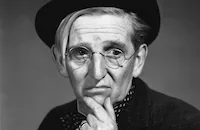
Jimmy Conlin
Bill Nelson
Harry Tyler

James Flavin
Byron Shores
Henry Roquemore
John Sheehan
John Maxwell
Jay Novello

Eve March
John Harmon
Walter Tetley
Kenny Stevens

Fern Emmett
Pat Gleason

Frank Ferguson
Linda Brent
Eddie Bruce
John Day
Kernan Cripps
Grace Lenard
Crew
Harry Akst
George Barnes
Ben Bernie
Eubie Blake
James W. Blake
William F. Bloecher
John Bright
Shelton Brooks
Bernard B. Brown
Kenneth Casey
Buddy Desylva
Walter Donaldson
Fred Fisher
William Fox
R. A. Gausman
George Graff Jr.
Bud Green
Bert Hanlong
Ray Henderson
Felix Jackson
William Jerome
Gus Kahn
Ted Kent
Charles B. Lawlor
Sam Lewis
Bruce Manning
Bruce Manning
G. M. Matoo
John Mattison
Chauncey Olcott
Jack Otterson
Maceo Pinkard
Charles Previn
Ernest R. Ball
Richard H. Riedel
Julian Robeldo
Matos Rodriguez
Benny Ryan
Jean Schwartz
Frank Shaw
Noble Sissle
Frank Skinner
Dorothy Terriss
Seward Webb
Vera West
Joe Young

Film Details
Technical Specs

Quotes
Trivia
Notes
According to Variety, Universal paid $200,000 for the film rights to Philip Dunning and George Abbott's play. In January 1941, Hollywood Reporter announced that Universal had cast George Raft in the planned production Tango, under the freelance provision of his Warner Bros. contract. That film, however, was never made. In late 1941, Warner Bros. loaned Raft to Universal to co-star with Rosalind Russell in a Bruce Manning production Marriage of Inconvenience, under the direction of William Seiter. That project, too, was canceled when Universal was unable to schedule the film around the demands of the actress. Consequently, Universal announced in December 1941 that is was remaking of Broadway, with Raft, Seiter and Manning. In April 1942, Raft told the New York Times that he agreed to pay Warner Bros., with whom he had been feuding for eight months over his refusal of roles, $27,000 of his Universal salary in order to do this film. According to New York Times, Warner Bros. later used that money to borrow actor Robert Cummings from Universal "free of charge."
In February 1942, Hollywood Reporter announced that actress Marjorie Lord, who had recently been signed to a contract by Universal, was being tested for the female lead in this film, but that role later went to Janet Blair, who was borrowed from Columbia for the production. Universal borrowed director of photography George Barnes from independent producer David O. Selznick. Associate producer Frank Shaw headed the unit that went on location to New York for two weeks in early February 1942 to shoot background footage for the film, and, according to Universal publicity materials, he battled "weather, crowds and civic restrictions" in trying to get film of the new, "wartime" Broadway. In late March 1942, Hollywood Reporter stated that actor Broderick Crawford had been brought back to the production for additional scenes, as the studio had decided to "build up his part." Universal first filmed the play in 1929 under the same title; that part-Technicolor sound film starred Glen Tryon and Evelyn Brent and was directed by Paul Fejor (See AFI Catalog of Feature Films, 1921-30; F2.0612). It was later adapted to television in 1955, as part of Westinghouse's "The Best of Broadway" series for CBS, starring Joseph Cotten and Piper Laurie, and directed by Franklin Schaffner. George Raft and Janet Blair reprised their roles in a November 30, 1942 Lux Radio Theatre broadcast.












